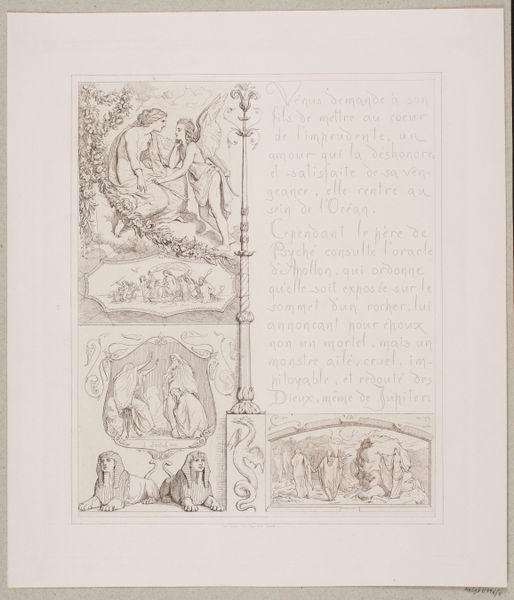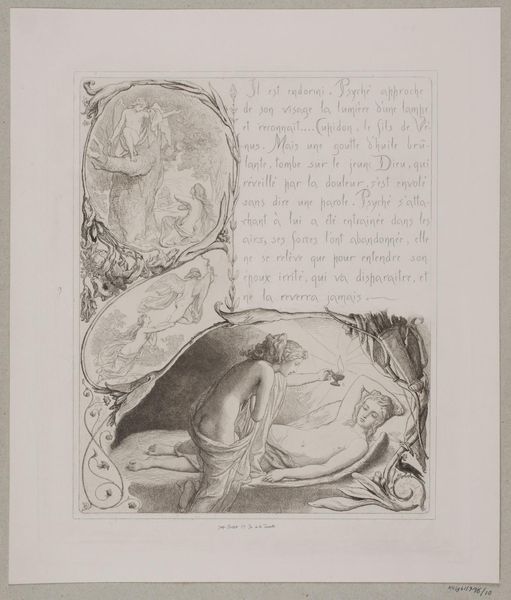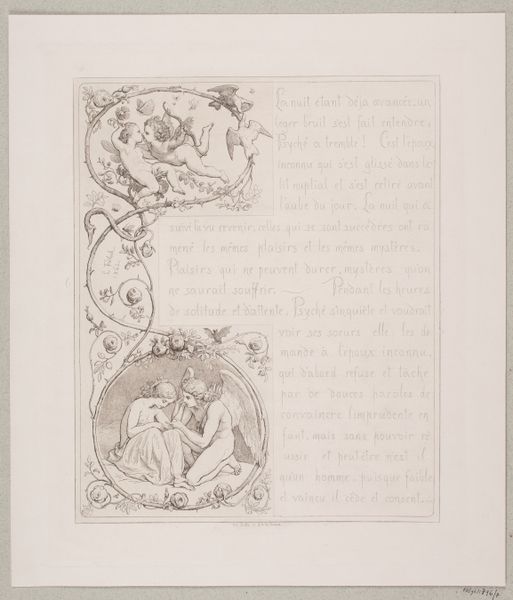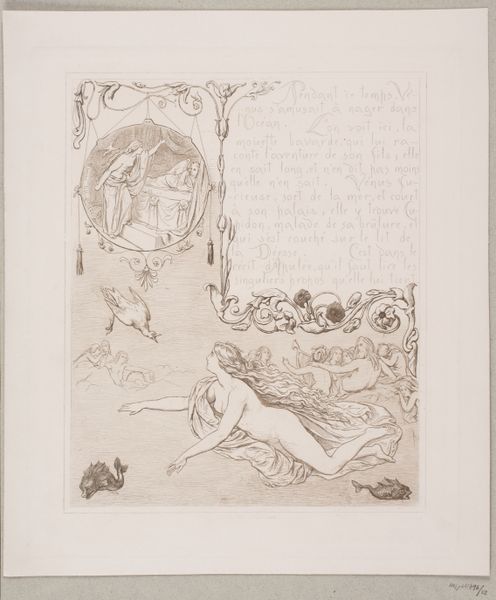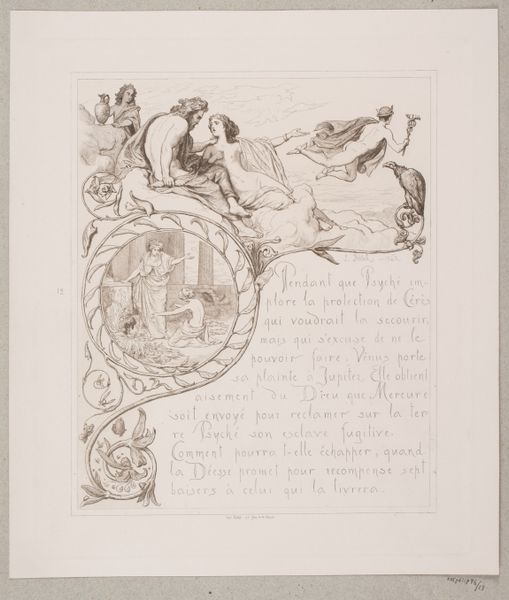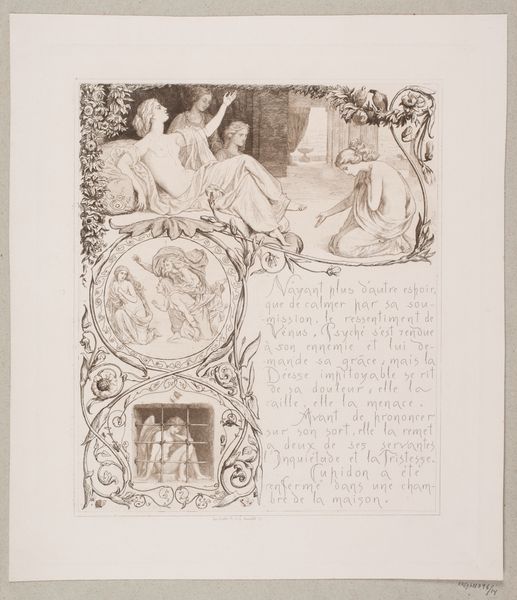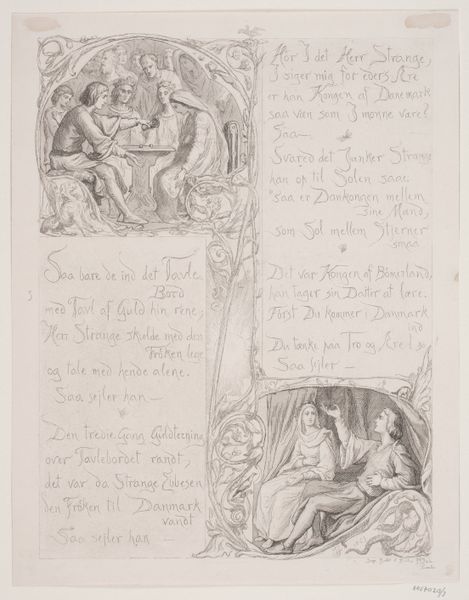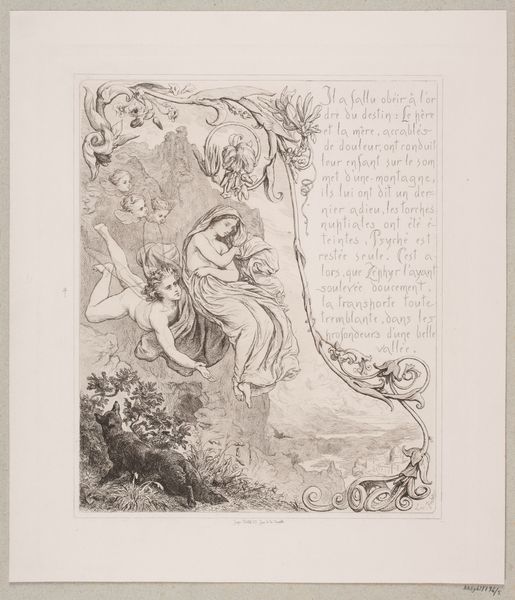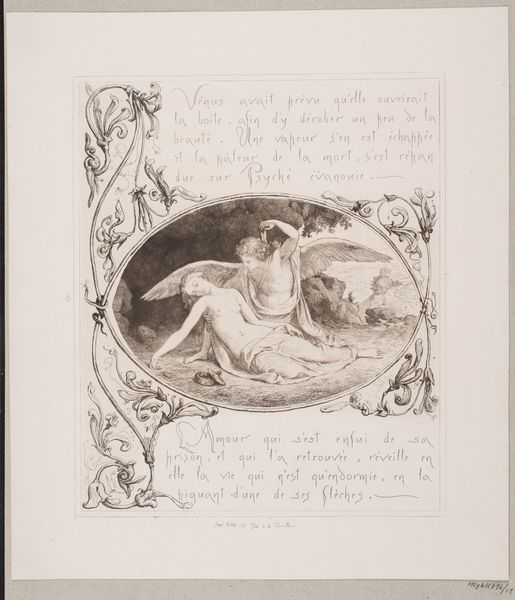
print, engraving
#
pencil drawn
#
light pencil work
# print
#
pencil sketch
#
personal sketchbook
#
sketchwork
#
ink drawing experimentation
#
pen-ink sketch
#
sketchbook drawing
#
pencil work
#
sketchbook art
#
engraving
Dimensions: 352 mm (height) x 308 mm (width) (bladmaal)
Curator: Here we have Lorenz Frølich’s “Illustration nr. 10 til ‘L`Amour et Psyché’,” created in 1862. Editor: It’s delicate, isn't it? Like a fossil pressed into paper. The faded sepia tones and the incredibly fine lines give it a sense of ancient grief. Curator: Indeed. This piece is an engraving, and part of a series illustrating the story of Cupid and Psyche. Frølich was a master of historical and mythological illustration, and this one shows how he drew on classical tales. Note the intricate frame around the central images—very much in keeping with the book design of the period. Editor: Absolutely, it's crafted with what looks to be a repetitive technique, potentially employing etched copper plates for prints of identical illustrations. Look closely at the composition, the figures at the bottom seem to be enacting a mournful scene near the water. I’d be curious to know if Frølich was involved in the physical printing or if his drawings were handed off to a workshop. Curator: The social context of book illustration at that time is so interesting; while Frølich enjoyed a certain status as an artist, his work was tied to the publishing industry and, to some degree, beholden to its demands. The piece, in this way, reminds us of the industrialization of art. Editor: That’s well-put. It underscores the tension between artistic vision and the mechanics of production. The choice of subject matter, this romanticized view of classical mythology, stands in stark contrast to the material realities of the artist’s work. What's amazing to me is the sheer amount of care given to an "illustration" of that time. It demanded exceptional skills and artistic vision. Curator: Right. Examining this piece really encourages one to question art production in that era, how those constraints of serial production may be interpreted. It seems to invite considerations of labor, and it forces me to think how we tend to compartmentalize 'high art' versus 'mere' illustration or craft. Editor: Exactly. There's a dialogue here between the subject depicted and the means used to depict it, and examining how this illustration functions reminds me how artistic creation relies not only on individual skill but a whole array of resources. Curator: A perfect lens for interpreting the piece. Thank you. Editor: Indeed, thank you. It has been enlightening.
Comments
No comments
Be the first to comment and join the conversation on the ultimate creative platform.

